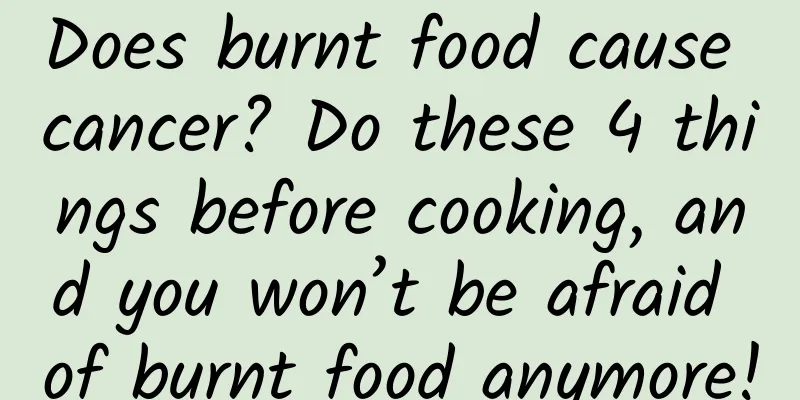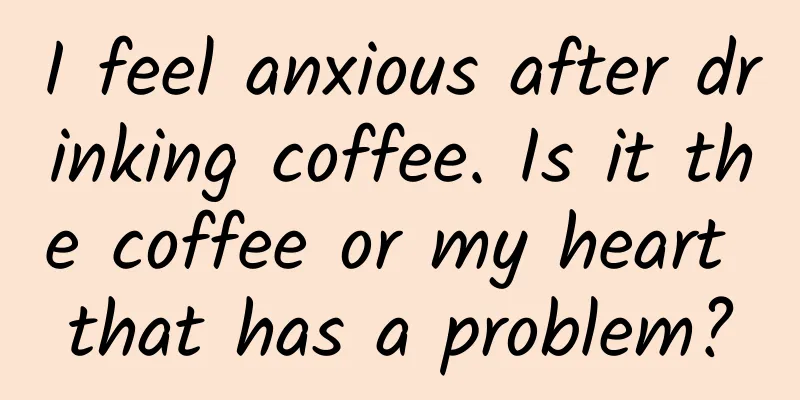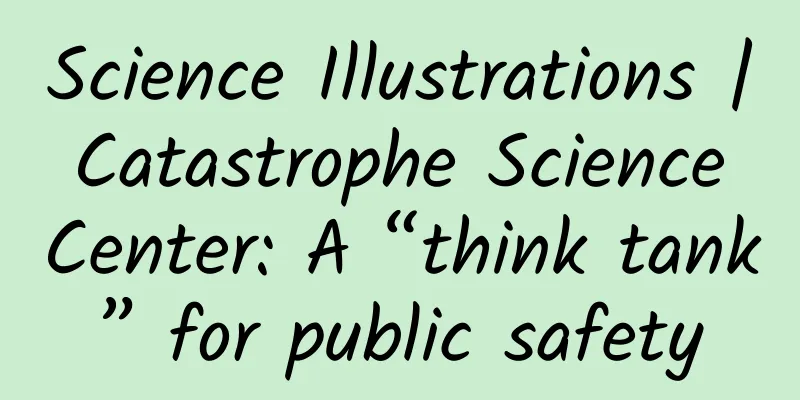Does burnt food cause cancer? Do these 4 things before cooking, and you won’t be afraid of burnt food anymore!

|
For those who like cooking, the kitchen at home is the place with the most "homely" feeling. Ingredients must be cooked through different techniques such as stir-frying, roasting, frying, deep-frying and grilling to make them delicious. Nowadays, with the improvement of living standards, people are paying more and more attention to the nutrition and safety of food. We often hear that "burnt food cannot be eaten, it will cause cancer!" This makes many people more concerned about the crispy and crispy food on the table. Can we eat burnt food? Does it mean we will get cancer if it causes cancer? Let’s clarify it today. Copyright image, no permission to reprint 01 After food is burnt what happens? As we all know, the secret of cooking lies in the mastery of "heat". The right temperature not only affects the taste, texture and appearance of food, but also means that we can enjoy food more safely. When the heat is too high, the burnt color and burnt smell of the food in the pot remind us that the food is burnt. This not only means that the vitamins, unsaturated fatty acids and other nutrients originally contained in the food are destroyed, but more importantly, it will also produce a variety of harmful substances. 1. Acrylamide: Class 2A carcinogen, i.e. “possible human carcinogen” When starchy foods (such as potatoes, steamed buns, etc.) are heated to a certain degree at high temperature, you will see that the color of the food begins to turn yellow and brown, and emit a slightly burnt aroma. Copyright image, no permission to reprint This phenomenon is called the "Maillard reaction" and is also the main pathway for producing Class 2A carcinogen acrylamide. An experiment recorded the process of increasing the oil temperature from 150°C, 165°C to 180°C when frying potato chips, and found that the generation rate of acrylamide increased significantly with the increase of frying time and frying temperature [1]. In other words, the more burnt foods such as potatoes and steamed buns are, the higher the content of the carcinogen acrylamide is generally . 2. Heterocyclic amines: mutagenic and carcinogenic When protein-rich foods (such as chicken, beef, pork and fish) are cooked at high temperatures, heterocyclic amines are produced. Studies have found that heterocyclic amines have strong carcinogenic and mutagenic abilities and are associated with cancers such as colon cancer and breast cancer [2]. In daily cooking, the speed and quantity of heterocyclic amines appearing are staggering: Usually, a large amount of heterocyclic amines will be formed within 5 minutes after the meat is put into the pan, and the formation rate will slow down after 5-10 minutes; when the pan temperature rises from 200℃ to 300℃, the mutagenicity of heterocyclic amines increases 5 times[3]. It is worth noting that among the cooking methods of meat, frying and grilling produce higher levels of heterocyclic amines than baking, stewing and microwaving. Copyright image, no permission to reprint 3. Benzopyrene: The highest level of carcinogen, Class 1, which means "definitely carcinogenic to humans" Experiments have shown that when meat is fried or grilled at temperatures exceeding 200°C, a large amount of harmful substances will be formed, and polycyclic aromatic hydrocarbons are one of the carcinogens. Among the more than 200 PAHs discovered to date, benzopyrene is the most carcinogenic [4]. Such a lethal carcinogen can easily be contaminated in food during cooking[5]: 1) When smoking or grilling food, the charcoal used, the smoke emitted, and the thermal polymerization of the charred fat products of the food dripping onto the fire will all form benzopyrene, which will adhere to the surface of the food; 2) When frying food at high temperature, high-temperature vegetable oil that is used multiple times, over-fried food, and fumes produced by heating at over 270°C will all produce benzopyrene, and the higher the oil temperature, the more benzopyrene is produced. 02 Eating burnt food Will I definitely get cancer? Although in theory, these carcinogens have the risk of causing cancer when they enter the human body, it is ultimately a matter of probability and does not necessarily mean that they will cause cancer . First, we cannot talk about toxicity without considering the dosage . Although there is no clear quantitative relationship between the carcinogens in burnt food and the risk of cancer, there is still a lack of evidence. Experiments have shown that if you add burnt fish meal to the feed of hamsters and feed it to them throughout their lives (the lifespan of hamsters is 2-3 years), the hamsters in the experiment will not get cancer. In our daily cooking, it is inevitable that some ingredients will have burnt parts. The amount consumed occasionally is far from the amount that will eventually cause cancer, so there is no need to worry too much . Copyright image, no permission to reprint At the same time, the human body also has a complete anti-cancer immune defense system[6]. The spleen is responsible for clearing various bacteria, foreign matter and cancer cells from the blood. The blood also contains white blood cells and macrophages that are responsible for phagocytizing bacteria... There are various "guards" in the human body that are always working to prevent the occurrence of cancer. In addition, not all foods that are burnt during cooking may cause cancer. Even if rice, vegetables and fruits are accidentally burnt, they will not produce similar carcinogens, they just taste bad. Therefore, in order to ensure taste and health, you should avoid eating the burnt parts when eating. 03 Everyday cooking How to reduce carcinogens? In fact, many carcinogens cannot be absolutely avoided in modern life. And meat is the main way for us to get protein, so it is difficult to completely give it up in our daily diet. Therefore, what we can do is to minimize the production of carcinogens in daily cooking. 1. Raw material pretreatment Soaking food ingredients can effectively reduce the reducing sugar and asparagine content on the surface and inside, thereby controlling the formation of acrylamide[1]. Marinating meat to be grilled with spices in advance can contain antioxidants that can inhibit the formation of carcinogens[7]. Copyright image, no permission to reprint 2. Control heating time and temperature Preheating ingredients in advance can effectively reduce the heating time of actual cooking; using a hot pan and cold oil when cooking can preserve the nutrients of the ingredients while avoiding the rapid and excessive production of carcinogens such as acrylamide at high temperatures [1][4]. 3. Avoid direct contact with flames It is recommended to use more indirect liquid smoke instead of gas smoke for smoking food; it is recommended to use an electric oven that does not come into contact with open flames for grilling food, which not only avoids the carcinogens in the smoke from adhering to the food, but also directly prevents the strongest carcinogen benzopyrene from being produced when oil drips onto the fire. 4. Keep the kitchen clean When cooking daily, try to use a range hood to expel fumes containing small amounts of carcinogens in a timely manner. After frying a dish, the black scale produced around the pot also contains the carcinogen benzopyrene, so be sure to scrub the pot before cooking the next dish . Life is complicated, and the formation process of various harmful substances is also complicated. As long as we can clearly understand the existence and mechanism of potential hazards and develop good habits to prevent them reasonably, there is no need to be afraid of them. References: [1] Chai Qingqing, Wu Wen, Liu Pengfei, et al. Research progress on the formation mechanism, detection methods and control measures of acrylamide in food[J]. Food and Machinery, 2021, 37(5):6. [2] Wu Yongning. Heterocyclic amines I: carcinogenicity and mutagenicity of thermal decomposition products of proteins and amino acids in cooked food [J]. Foreign Medical Hygiene, 1993, 20(5):282-285,294. [3] Wu Yongning. Heterocyclic amines II, products of thermal decomposition of proteins and amino acids in cooked food. Formation mechanism, detection method and content level [J]. Foreign Medical Hygiene, 1993, 20(5):286-290. [4] Zhu Xiaoling. Production and control of polycyclic aromatic hydrocarbons in cooking process[J]. Journal of Sichuan College of Culinary Arts, 2012(5):4. [5] Wu Dan. Harmfulness of benzopyrene contamination in food and its preventive measures [J]. Food Industry Science and Technology, 2008, 29(5): 309-311. [6] Zhang Guoliang. Cancer and the human body’s anticancer defense system [J]. Drugs and Humans, 1998, 11(6): 20-21. [7] AICR. Five Steps for Cancer-Safe Grilling[Z]. 2018,06,26. Author: jting Reviewer: Gao Chao, Associate Researcher, Institute of Nutrition and Health, Chinese Center for Disease Control and Prevention The cover image and the images in this article are from the copyright library Reproduction of image content is not authorized |
<<: Are white strawberries genetically modified fruits?
>>: You treat oyster mushrooms as vegetables, but oyster mushrooms love to eat meat
Recommend
A long article to understand all the tricks of the "100,000+" title
This is an era of "information miniaturizati...
Don't tear off the sticker on the bottom of the thermos cup!!! Otherwise...
Today I will tell you a cold but warm knowledge: ...
The article layout is not good? Here are 4 design principles that are essential for operations
In "A Design Book for Everyone", Robin ...
A structure that a child can make has puzzled the mathematical community for 50 years
Not long ago, the famous mathematician Richard Ev...
How to promote and attract new users during the cold start phase of APP?
As the threshold for APP development is lowered, ...
Uncover the secrets of Tik Tok’s explosive growth and addiction!
In the past six months, especially during the epi...
"Douyin Commercial IP Core Practice Course" takes you to play with algorithms, traffic, content, architecture, and monetization
"Douyin Commercial IP Core Practice Course&q...
Alibaba internal review | How to plan a large-scale brand event from scratch
Organizing various celebration activities is a pr...
Guizhou launches aerial disinfection! Which areas have been disinfected? What role can it play?
According to the official Weibo of the Ministry o...
Analysis of the most effective Taobao promotion methods for Taobao operations
Many sellers currently have a problem, that is, t...
We-media enthusiastically embrace video talk shows
Wei Wuhui, a scholar from the School of Media and...
Tesla urgently investigates fire incident
Last Friday morning, a shocking Tesla electric car...
How to optimize Google search ad keywords?
I believe everyone knows the importance of Google...
In information flow advertising promotion, how to enable users to complete transactions quickly?
When users are unable to fully understand the pro...
How does Kuaishou achieve commercialization?
Video applications will be our focus for some tim...









